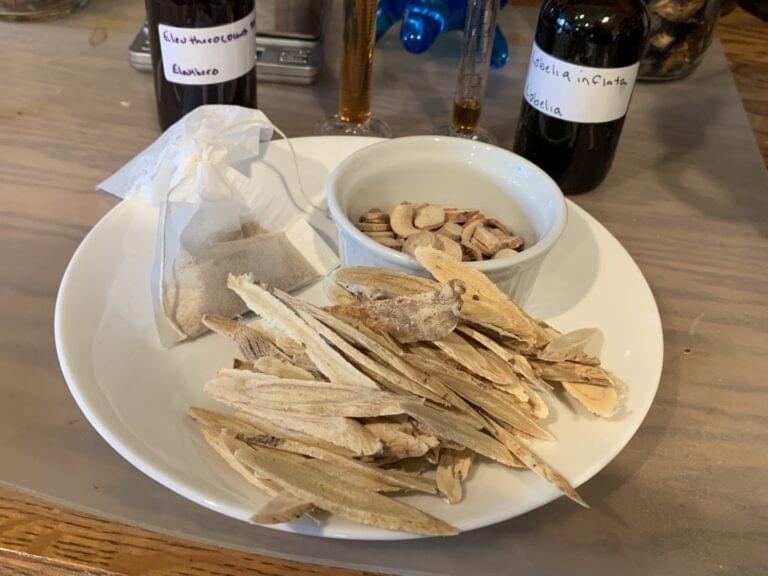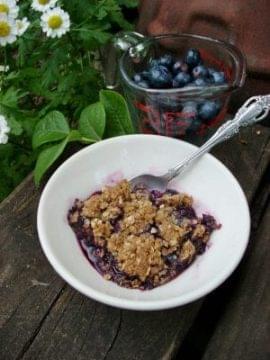This is a slow-cooker recipe. You can make it on the stove top as a standard decoction using the same ratio of herb to water. Here’s what’s in it and why:
- Astragalus – This is a good adaptogen specializing in the immune system and upper body, according to Dr. Courtney Connell of Acupuncture Therapy. It’s a solid choice for longer-term use to help the body handle the stressors that come with seasonal change (and other stuff, too.)
- White Peony and Licorice Root – This pair is good for helping clear stagnation, especially blood stagnation. This is another combo Dr. Connell suggests based on the TCM approach to herbal healing. White Peony and Licorice root are classic for women’s fertility years – especially when menstruation includes cramping and clotting. Here, the aim is to help keep the blood moving well through out the body. Men and perimenopausal women who typically feel stiff, tired, achey, and potentially have edema through seasonal changes will like this combo too.
- Eleuthero senticosis, aka Siberian Ginseng – This root is an adaptogenic energy builder. It’s not as powerful as Reishi, making it particularly good for those who are highly sensitive or can easily be too revved up by the stronger energy-boosters.
- Lobelia – This one is here to help aim the formula toward the chest and lungs. Lobelia has a particular affinity for that area, but more importantly has the ability to recognize the area of the body where the formula is most needed and direct the team to that region.
Possible substitutes:
- Elderberry or Rose hips make a good substitute for White Peony and Licorice. Elderberry helps strengthen cell walls and Rose hips offer nutritive support for building tissues.
- Schizandra berry makes a good substitute for White Peony and Licorice if you want to balance your digestive system. They’re supportive of the heart, lungs, and digestive system with a particular affinity for the lungs. Folks who tend toward diarrhea or disturbed sleep can be helped by schizandra.
Ingredients
- 3 quarts (2.75 l) water
- 50 g Astragulas root slices (a large handful)
- 35 g or 3-4 Tbsp (40-60 ml) White Peony
- 8 g or 3 tsp (15 ml) Licorice Root powder (or whole root if weighing)
- 10 ml Eleuthero senticosis root tincture
- 1 ml Lobelia tincture
Equipment
- 3 quart (3 L) slow cooker or similar
- Scales or equipment for weighing
- Measuring spoons
Procedure
- Weigh or measure your ingredients. If you’re using any powdered herbs, put them into a tea bag or similar pouch so the powder will not disburse in the water.
- Add all ingredients to the slower cooker.
- Set the slow cooker to low. Be sure the slow cooker is plugged in.
- Let the herbs cook for at least 12 hours.
- Strain out a mug at a time and enjoy.
Storage and Use
You can strain the herbs from this blend after 12 hours and store the resulting decoction in a glass container in the refrigerator. If you do so, when you pour a mug full to drink, be sure to warm it so it’s at least lukewarm. Hot but not too hot to drink is better.
You can let the herbs and decoctions stay in the slow cooker for several days, cooking on low the whole while. This is my preferred method. If you do so, use a ladle to portion out a cup or so at a time to drink. Replace the volume of water you’ve taken out each time until you notice the decoction is starting to taste weak, at which point just finish it off and discard the herbs.
You can take 1-2 mugs of this decoction daily. I do so in the morning and late afternoon. I generally aim for about 8 ounces (250 ml), but I rarely measure precisely. Adjust as makes sense to you. You can continue to take this blend through the season change, up to a couple of months.






